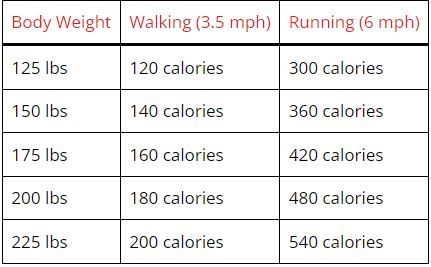Walking vs. running: which is better?
Are you debating between walking and running as far as your health is concerned? Although all types of exercise offer many advantages, which one is best for you?
Why Walking Is Good for You
A low-impact activity that is easy on the joints and available to practically everyone is walking. The following are some advantages to walking:
Walking consistently can lower your blood pressure and cholesterol levels, which can lessen your risk of heart disease. It’s excellent for your heart.
It aids in weight reduction: Walking burns calories, and when coupled with a balanced diet, it can aid in weight loss.
It improves your mood. Studies have shown that walking helps lessen the signs of anxiety and despair. Walking is a natural mood enhancer.
Walking is a weight-bearing exercise that can help prevent bone loss and lower your chance of developing osteoporosis. It strengthens your bones.

The benefits of Running
Running is a more demanding workout that may increase your calorie burn and fitness levels. Here are a few advantages to running:
It’s fantastic for the condition of your heart. By enhancing blood circulation and strengthening your heart’s muscles, running can help you maintain good heart health.
It can aid in weight loss: Running helps you lose weight more quickly and burns more calories than walking does.
It benefits your mental well-being. Endorphins, which are organic mood enhancers that can help lessen the symptoms of despair and anxiety, are released while you run.
It strengthens bones: Running is a weight-bearing activity that, like walking, can help to strengthen your bones and lower your risk of osteoporosis.
Which is superior? Depending on Your Objectives
There is no right or incorrect decision when deciding whether to run or stroll. It all depends on your fitness level and ambitions.
Walking is a fantastic workout choice, whether you’re new to it or have joint issues. It is low-impact and convenient for use at any time or place. For optimal health, aim for daily vigorous walking of at least 30 minutes.
Running could be a better alternative if you’re wanting to advance your fitness. It is a more demanding kind of exercise that can increase calorie burning and boost cardiovascular health. To prevent damage, it’s crucial to start out gently and gradually increase your endurance.
The type of exercise that you will continue with and like is ultimately the best for you. Decide on a fitness programme that suits you and your lifestyle, whether you want to stroll, run, or do a combination of the two.
Chart showing the calorie burn during running as well as walking:
Yes, here is a chart that shows the approximate number of calories burned during walking and running based on body weight:

Running burns more calories for the same length of time as walking, as you can see from the chart, but both exercises may be efficient for weight reduction and calorie burn. Additionally, characteristics like age, gender, and degree of fitness will have an impact on the quantity of calories burned. It’s crucial to remember that achieving a calorie deficit—burning more calories than you take in through food and drink—is the key to losing weight. To reach your weight reduction objectives, it’s crucial to pay attention to your nutrition in addition to exercise, such as walking or jogging, which may help create a calorie deficit.
Calorie calculations for walking are made using the following formula:
(MET x body weight in kg x time in hours) = calories expended.
The term “MET” (Metabolic Equivalent of Task) refers to a measurement of an activity’s energy use. The MET value for walking is around 3.5.
Here is a calculating illustration:
A 150-pound (68-kg) individual walks for 30 minutes (0.5 hours). The equation would be:
(3.5 x 68 x 0.5) calories burned is 119 calories
This method offers an estimate of the amount of calories burned when walking, but because it does not account for variables like age, gender, or fitness level, it may not be entirely correct for everyone. For individualised guidance on determining the number of calories burned during exercise, it is always better to speak with a healthcare practitioner or a licenced fitness trainer.
Which is healthier for your health, walking or running?
Both running and walking are great cardiovascular exercises that have many positive health effects. Your exercise and health objectives determine the one that is ideal for you.

Advantages of cardio:
Both walking and running are aerobic cardiovascular activities that can improve your heart health, enhance your immune system, help you lose weight or maintain a healthy weight, and increase your stamina. Additionally, cardiovascular activity is beneficial to mental health because it lowers anxiety and despair while boosting mood and self-esteem.
Running vs. walking for weight Loss:
Running burns almost twice as many calories as walking, despite the fact that strolling can offer many of the same advantages. For a 160-pound person, running at 5 mph burns 606 calories, compared to 314 calories burned by brisk walking at 3.5 mph in the same length of time. Running is thus a better option than walking if your objective is to reduce weight.
Speed and Power Walking vs. Running
Walking quickly, generally at 3 mph or more, is known as speed walking. This type of walking raises your heart rate and burns more calories than regular walking does. On the other hand, power walking expels calories at a rate comparable to running. It entails moving at a 3 to 5 mph, or even 7 to 10 mph, walking speed. Try pace training, where you gradually pick up the pace for two minutes at a time before slowing it back down to get good exercise.
Running vs. Incline Walking:
Walking uphill, or incline walking, can burn about as many calories as jogging. To practice incline walking, you may gradually raise the inclination by 5, 10, or 15%.

Benefits vs. Risks:
Running is a terrific method to get in shape and reduce weight, but it can be more taxing on your body than low-impact workouts like walking because of its high impact. Running can eventually result in overuse ailments, including stress fractures, shin splints, or ITB friction syndrome. In comparison, runners have a possibility of 20 to 70 percent, while walkers have a danger of 1 to 5 percent.
Takeaway:
The ideal cardiovascular activity for you will depend on your fitness and health objectives, although both walking and running are terrific options. Walking is a wise choice to get in shape if you’re new to exercise, while running is excellent for weight reduction. However, if you run, take precautions to avoid injuries, such as cross-training and refraining from increasing your distance too soon. Before starting a new workout regimen, always consult your doctor.
